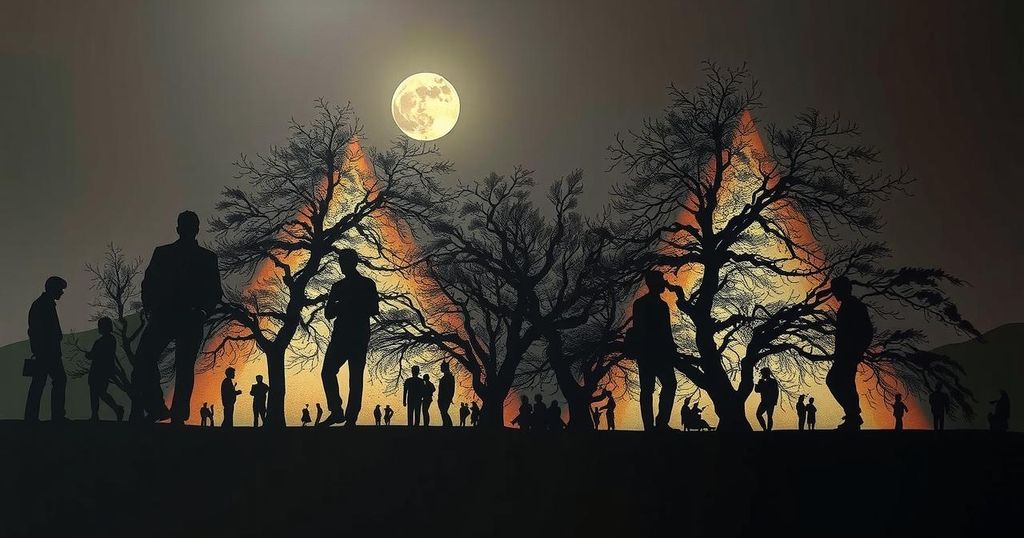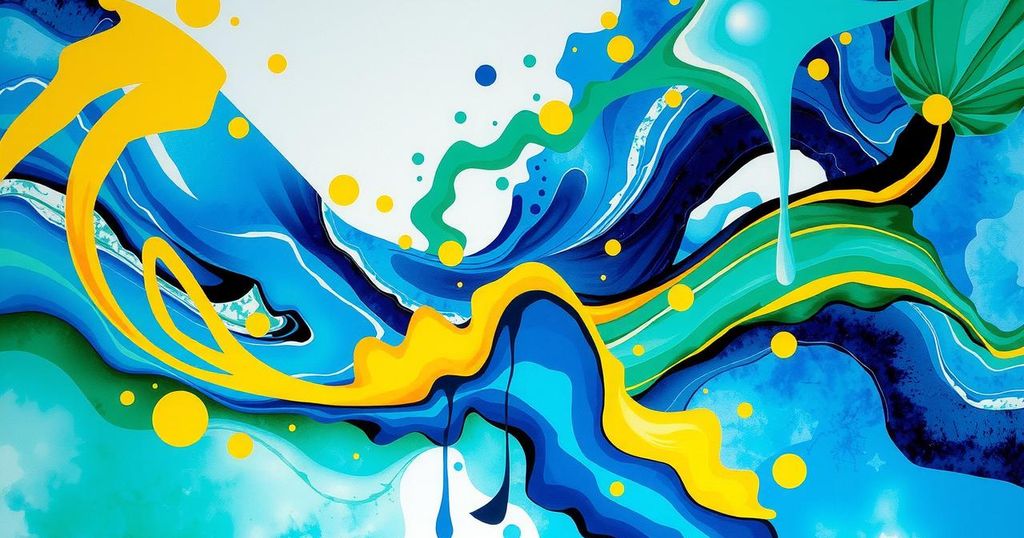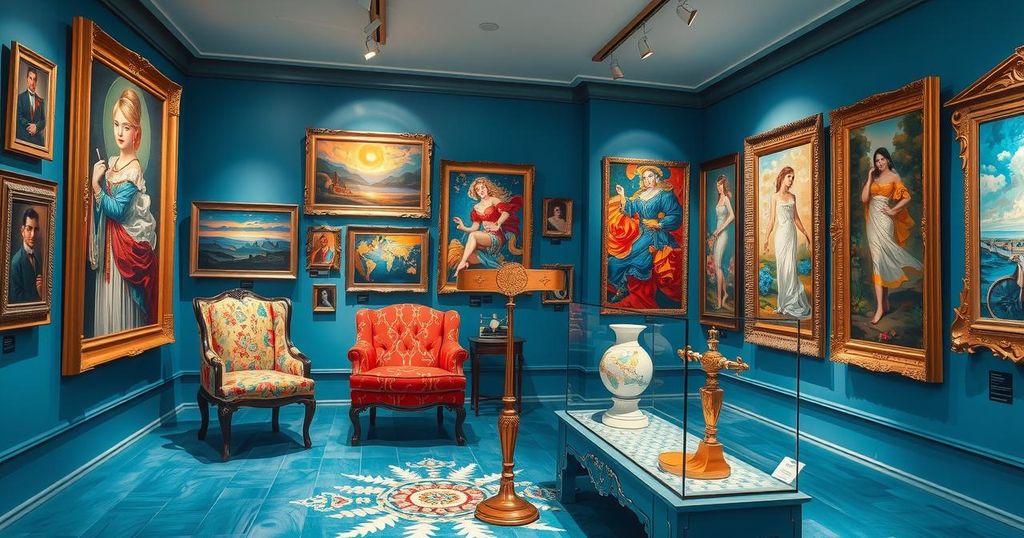George Rouy: The Reclusive Painter Transforming Isolation into Art
Summary
In a quaint, converted church in Faversham, England, George Rouy lounges amidst the ethereal glow of stained-glass windows. These colorful panes veil the world outside, immersing him in a cocoon of solitude, 50 miles from the bustling heart of London. It’s here, in this sanctuary of quiet, that Rouy, a 30-year-old painter, wrestles with the isolation that envelops many artists. “It can be quite a lonely experience,” he muses, his tone steeped in introspection. “There’s a heaviness that weighs on you. Sometimes, that’s the hardest part of being an artist.” Yet, it is in this aloneness that he finds inspiration, twisting it into the fabric of his art. In his vibrant paintings, figures intertwine and dissolve into one another—a whirlwind of flesh tones that seem to pulse with life and energy, yet remain mute, drenched in their own emotional complexities. These are not mere subjects; they are echoes of human experience, embodying themes of collective care, loss, and transcendence, references that range from the divine to the mundane. As Rouy prepares for “The Bleed,” his solo debut with the prestigious Hauser & Wirth gallery, he stands as the youngest artist in their ranks, a rising star ready to illuminate the art world. His two-part exhibition, featuring a blend of works showcased in London and Los Angeles, is a dance of bodies, captured in moments of weightiness and weightlessness, each stroke a testament to the essence of humanity he seeks to portray. Rouy’s journey into the world of art began in the familiarity of Sittingbourne, where creativity flowed through him like a river, embracing him even when academic pursuits felt foreign. “It’s always been my language,” he reflects, recalling the warmth of the studio—a refuge that welcomed him. Guided by parental encouragement, art became a family affair, with both siblings also choosing the artistic path. During his time in art school, Rouy felt the pressure to conform, stepping away from figuration, dismantling the essence of his initial passion. But liberation came after graduation, as he rediscovered his love for painting. “I rebuilt my practice,” he says, a glint of determination in his eye. His style, now marked by a raw, expressive brilliance, quickly captured attention across the Atlantic, unveiling a narrative that resonates deeply with viewers. His creative process unfolds like a modern-day artist’s ritual: weaving through the digital tapestry of images, he curates them into collages, not to replicate but to ignite his imagination. The initial layers, painted in acrylics, reveal a tangible reality, but as he layers on the paint, the forms begin to blur, evoking chaos and a sense of existential questioning. “There is something existential about the work,” Rouy notes, his gaze turning introspective as the colors swirl on the canvas. With oil paints, he adds the final touch—a luminous, weighty signature that acrylic cannot imitate. This technique transmits an ethereal glow, suggesting the shimmer of a digital screen, reflective of the technological zeitgeist, yet Rouy is quick to clarify: the essence of his work transcends mere commentary on technology. Visually striking with his bright blonde hair and slender frame, Rouy could easily be mistaken for a punk rocker, his past musical endeavors forming another chapter in his creative chronicle. Though he thrived in expressing himself through melody and rhythm, collaboration had its challenges. “It drove me mad to work with others,” he admits. “You become accustomed to reigning over one’s work, and suddenly, sharing that control can be maddening.” However, the allure of avant-garde choreography has nudged him out of his self-imposed isolation. Inspired by Sharon Eyal’s innovative work, Rouy found collaborative opportunities he never thought possible, leading to the creation of two performance pieces that reflect a marriage of visual art and movement, expected to grace stages in the U.S. and Europe by 2025. His paintings will meld into the performance space, complemented by a haunting musical composition featuring cello and synthesizer, a vivid tapestry merging sound with sight. As the curtain rises and reality beckons, Rouy immerses himself in the warmth of shared creativity, yet he returns to his solitary studio, each departure dipping him back into the depths of his own artistic solitude. “It felt sad when I had to leave,” he admits with a wistful smile. But perhaps therein lies the magic of creation—a delicate balance of togetherness and isolation that sparks the most profound art, illuminating the path of a solitary soul in a loft adorned with waves of color and the weight of human essence.
Original Source: robbreport.com




Post Comment